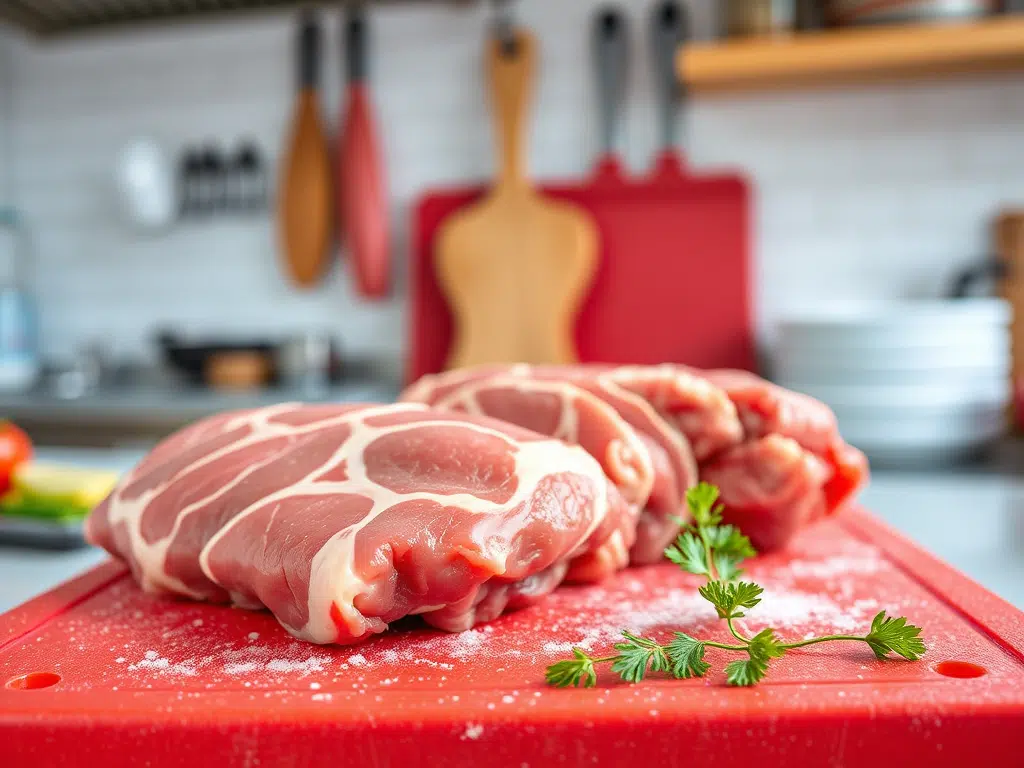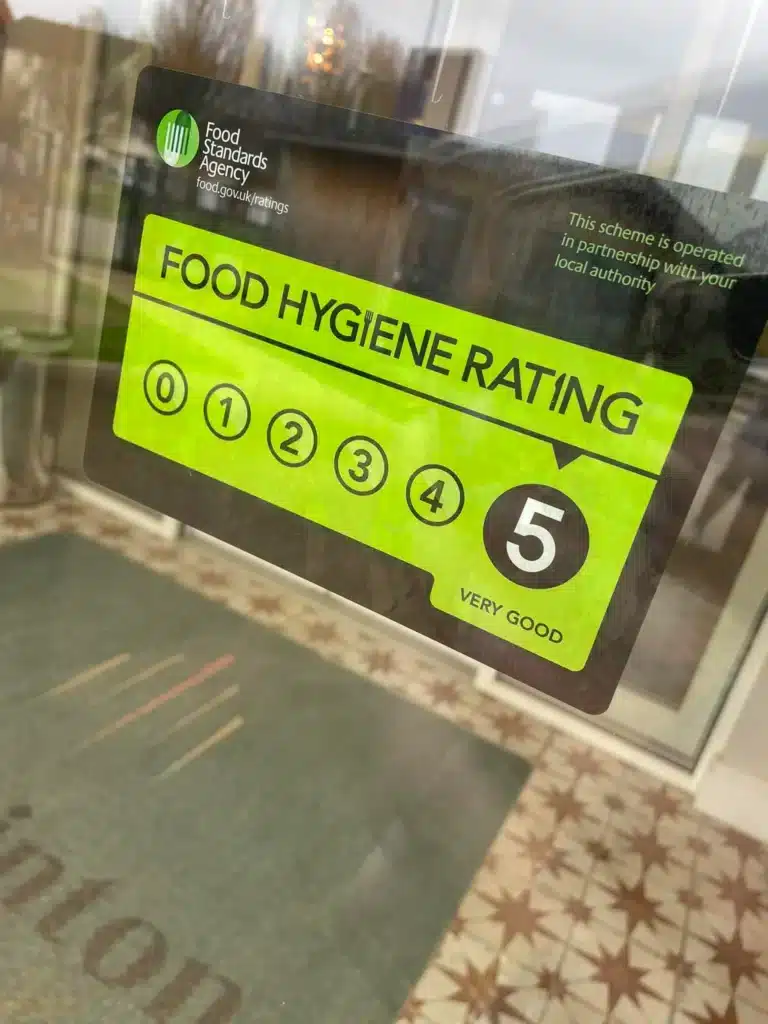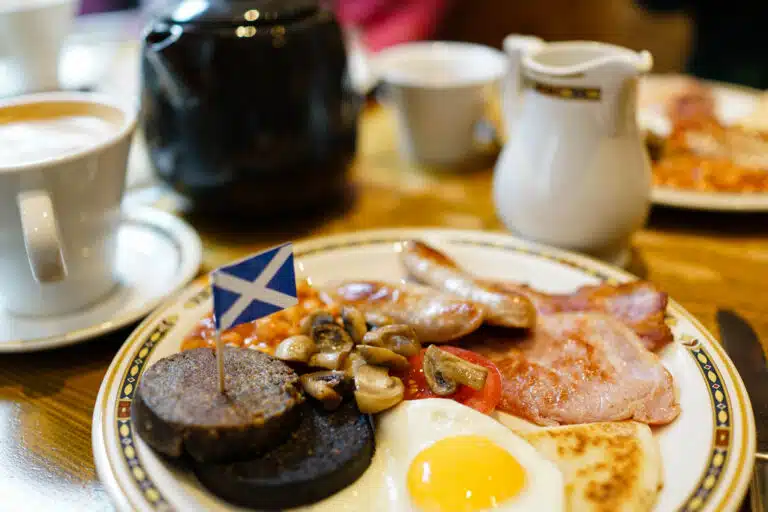Food hygiene is a top priority for anyone working in a kitchen, whether in a bustling café, a retail food outlet, a manufacturing facility, or even at home. Ensuring safe food handling practices is essential to protect the health of your customers and staff. A key strategy to achieve this is “kitchen colour coding”, a simple yet effective system to prevent cross-contamination and meet UK food safety standards. At Skilltopia, our Level 2 and Level 3 Food Hygiene training courses equip you with the knowledge to implement these practices and achieve a 5-star food hygiene rating, as highlighted in our 2025 Food Hygiene Ratings Report.
In this guide, we explore why kitchen colour coding is critical, which equipment to code, and how to implement a system aligned with the Food Safety Act 1990 and HACCP principles to keep your business compliant and your customers safe.

Why Food Hygiene Matters in 2025
Food hygiene is non-negotiable in any food business. Poor hygiene practices, like cross-contamination, can transfer harmful bacteria, leading to foodborne illnesses such as Salmonella or allergic reactions. According to the Food Standards Agency (FSA), UK food businesses must comply with the Food Safety Act 1990, ensuring safe food preparation and handling. Our 2025 Food Hygiene Ratings Report reveals that top-performing cities like Ipswich (4.92) and Gloucester (4.84) excel due to robust hygiene practices, while areas like London (4.40) lag behind. Implementing a colour coding system can help your business stand out and avoid the pitfalls faced by low-scoring regions like Waltham Forest (3.95).
What is Kitchen Colour Coding?
Kitchen colour coding involves assigning specific colours to kitchen equipment—such as chopping boards, knives, and storage containers—to designate their use for particular food types. This system, rooted in HACCP principles, minimises cross-contamination risks by ensuring equipment used for raw meat, for example, never touches vegetables or dairy. A clear kitchen colour chart displayed in your workspace helps staff quickly identify the correct tools, enhancing efficiency and safety.
Why is Colour Coding Important?
Colour coding is a cornerstone of food safety for several reasons:
- Prevents Cross-Contamination: Separating equipment by colour reduces the risk of harmful bacteria, like Salmonella from raw chicken, spreading to other foods.
- Protects Vulnerable Customers: For those with allergies or dietary restrictions, colour-coded equipment ensures allergen-free preparation, critical as food intolerances rise (e.g., gluten sensitivities).
- Ensures Compliance: Aligning with HACCP principles, colour coding demonstrates proactive food safety measures during FSA inspections, boosting your hygiene rating.
- Simplifies Training: A clear system makes it easier for staff to follow protocols, reducing errors in busy kitchens.
Without colour coding, achieving a high food hygiene rating is challenging. It’s a cost-effective way to enhance safety and customer trust.
What Equipment Should Be Colour Coded?
To prevent cross-contamination, colour code the following kitchen items:
- Chopping boards
- Knives and utensils
- Storage containers
- Thermometers
- Aprons and gloves
- Cleaning cloths
By assigning specific colours to equipment based on food type, you ensure consistent separation and compliance with food safety standards.
The UK Standard Food Colour Coding System
The UK follows a standardised colour coding system, aligned with HACCP principles, to streamline food safety across the industry. Here’s the recommended system:
| Colour | Food Type | Example Use |
|---|---|---|
| White | Bakery and dairy | Slicing cheese or pastries |
| Yellow | Cooked meat | Handling cooked chicken or pork |
| Green | Fruit and salad | Chopping lettuce or apples |
| Brown | Vegetables | Preparing carrots or potatoes |
| Red | Raw meat | Cutting raw beef or poultry |
| Blue | Raw fish | Filleting salmon |
| Purple | Allergen-free items | Gluten-free or nut-free preparation |
Additional Notes:
- Eggs: Prepare eggs separately to minimise salmonella risks, even though these are lower today.
- Shellfish: Use dedicated equipment, thoroughly cleaned, as it’s a common allergen distinct from fish.
Colour Coding for Cleaning
Cleaning is as critical as food preparation in maintaining hygiene. The British Institute of Cleaning Science (BICSc) recommends a colour coding system for cleaning equipment to prevent cross-contamination of chemicals or bacteria:
- Yellow: Kitchen surfaces and food preparation areas.
- Red: Bathrooms and high-risk areas.
- Green: Public areas like dining spaces.
- Blue: Bars or restaurant seating areas.
This ensures cleaning products don’t contaminate food preparation zones, aligning with FSA guidelines.
How to Implement and Maintain Colour Coding
To ensure your colour coding system is effective in a busy kitchen:
- Display a Kitchen Colour Chart: Post a clear, visible chart in your kitchen to remind staff of colour assignments.
- Use Ready-Coded Equipment: Purchase colour-coded chopping boards, knives, and containers from kitchen suppliers. For static items, use waterproof stickers.
- Train Staff: Enrol your team in Skilltopia’s Level 2 Food Hygiene training to understand cross-contamination and colour coding.
- Reinforce Cleaning Protocols: Use signs to emphasise thorough cleaning of equipment, especially after handling raw meat or allergens.
- Regular Audits: Check equipment usage during shifts to ensure compliance, and prepare for FSA inspections.
FAQs
Is Colour Coding a Legal Requirement in UK Kitchens?
While not legally required under the Food Safety Act 1990, colour coding is strongly recommended by the FSA and HACCP principles. Without it, demonstrating robust food safety practices during inspections is difficult, potentially lowering your hygiene rating.
Why Use Colour Coding for Food Containers?
Colour-coded containers ensure consistent storage of food types, reducing cross-contamination risks. They also speed up identification, improving kitchen efficiency and safety.
Why Use Yellow Cloths for Kitchen Cleaning?
Yellow cloths are recommended by BICSc for kitchen surfaces to avoid mixing with cloths used in non-food areas, preventing chemical or bacterial contamination.
Elevate Your Food Hygiene with Skilltopia
Colour coding is a simple, effective way to enhance food safety and achieve a top food hygiene rating. Skilltopia’s training courses help you implement these practices:
- Level 2 Food Hygiene Training: Perfect for food handlers, covering cross-contamination, HACCP, and colour coding essentials.
- Level 3 Food Hygiene Training: Ideal for managers, focusing on advanced risk assessment and compliance strategies.
- Online Learning: Access our courses anytime at skilltopia.co.uk/buy-courses.
With 5-star Google reviews and alignment with 2025 FSA standards, Skilltopia empowers your business to avoid the pitfalls. Enrol today to ensure customer safety and business success! Start Your Food Hygiene Training Now
Summary
Kitchen colour coding is a critical tool for preventing cross-contamination, ensuring compliance, and protecting customer health. By adopting a standardised system and training your team, you can boost your food hygiene rating and build trust. Skilltopia’s Level 2 and Level 3 Food Hygiene courses provide the knowledge and skills to excel in food safety, helping your business thrive in 2025.





